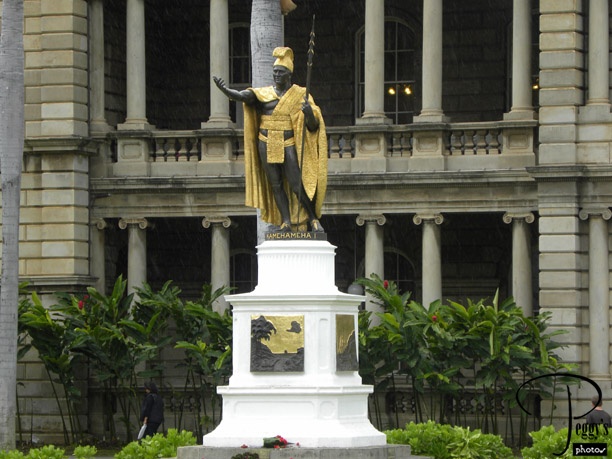Seen from the Punchbowl
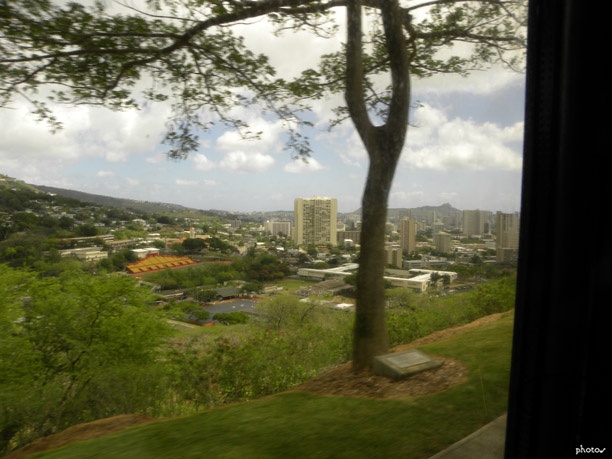
To the left of the last photo.

Seen from the Punchbowl
USS Arizona Memorial
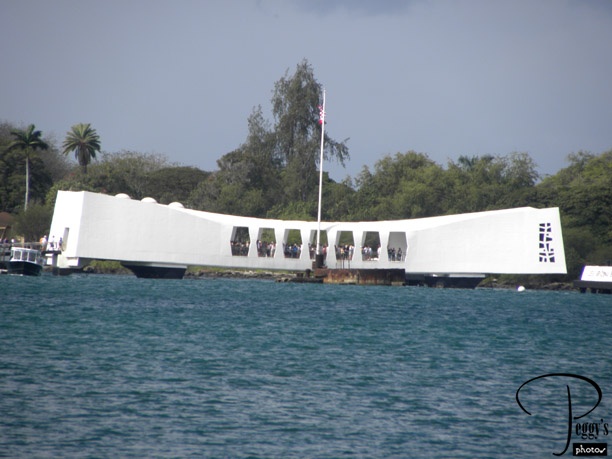
Today, I took a tour to the USS Arizona Memorial at Pearl Harbor, the Punchbowl cemetery, and downtown Honolulu. Photo: The USS Arizona Memorial. My daughter, Britt, had her kayak adventure canceled for the second day in a row due to high winds. She took a walk and spent a pleasant day on the beach.

USS Arizona Memorial
Rainbow
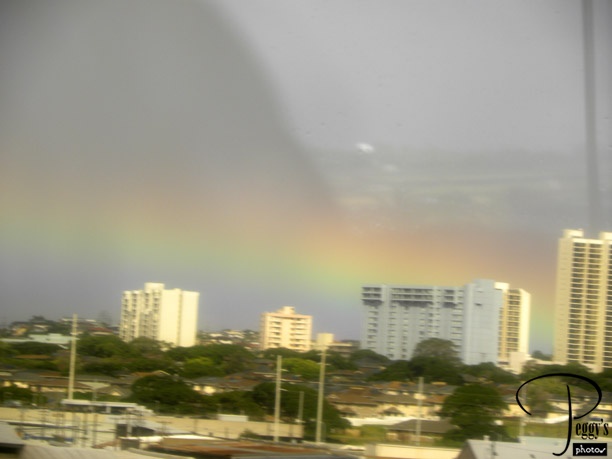
It was raining again off and on in Honolulu. It’s annoying when you are trying to take photos, but my daughter said it is welcome when you are on the beach and it is hot. The other upside are the rainbows after the rain stopped. Photo: Rainbow seen from the bus on our way to Pearl Harbor.

Rainbow
Rainbow
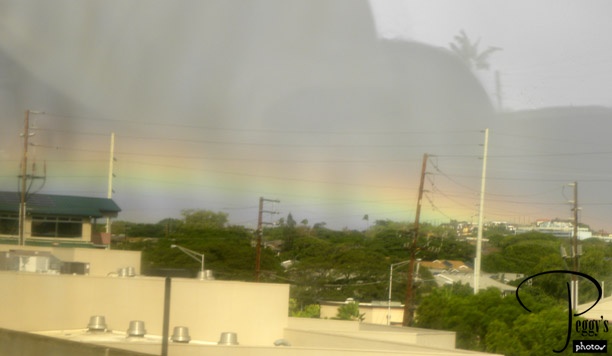
Another view of the rainbow.

Rainbow
USS Arizona Memorial
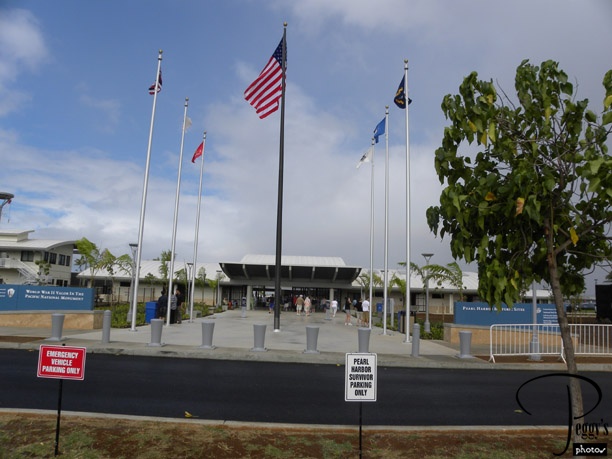
Entrance to the Visitor’s Center at the USS Arizona Memorial. This was not a great time to go there. Most of the old Visitor’s Center is being demolished because it is sinking as it was built on reclaimed land. The demolition noise was so loud that we could only hear our guide if we were about three feet away from him––and he was talking loudly. The noise took away much from the somber atmosphere of the memorial. (The new Visitor’s Center is to open in Dec. 2010.)

USS Arizona Memorial
USS Arizona Memorial
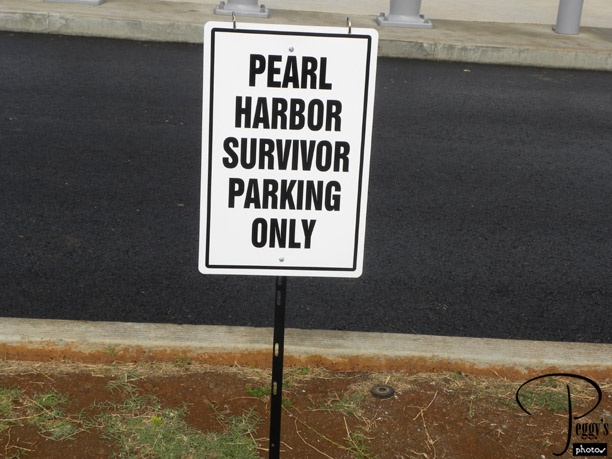
Special parking for Pearl Harbor survivors. I asked our National Park ranger how many survivors there are––he said about 3,000.

USS Arizona Memorial
USS Arizona Memorial
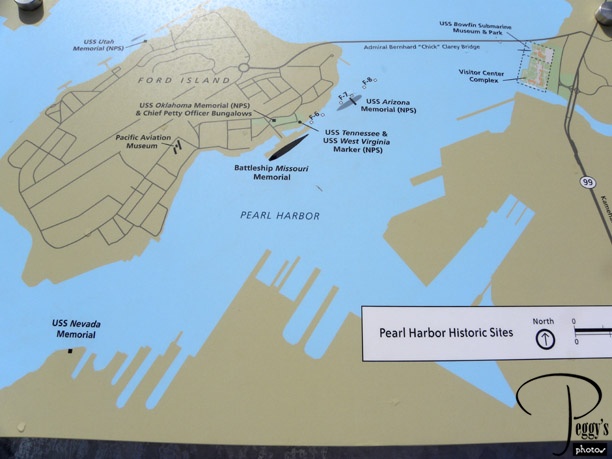
Overview of the Pearl Harbor Historic Sites: Ford Island on the left where the Pacific Aviation Museum is located. Both the USS Missouri (which you can board) and the USS Arizona Memorial are in the waters just off the island. You can take tours of all three sites or just one or two. My tour only included the USS Arizona Memorial. The Visitor’s Center (what is left of the complex) is on the mainland. You take a boat to see the Arizona Memorial and also to Ford Island.

USS Arizona Memorial
USS Arizona Memorial
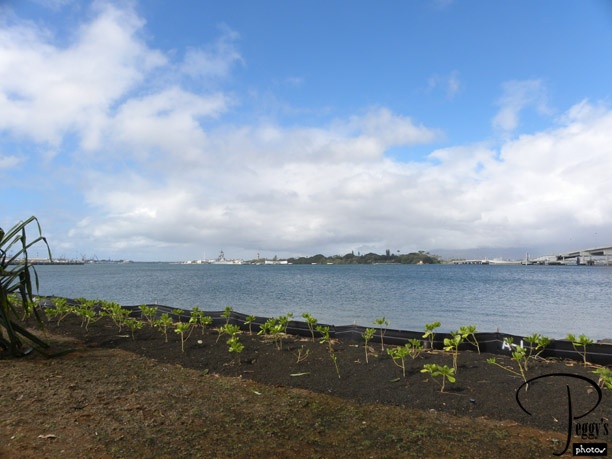
View of Ford Island taken from the Visitor’s Center area.

USS Arizona Memorial
USS Arizona Memorial
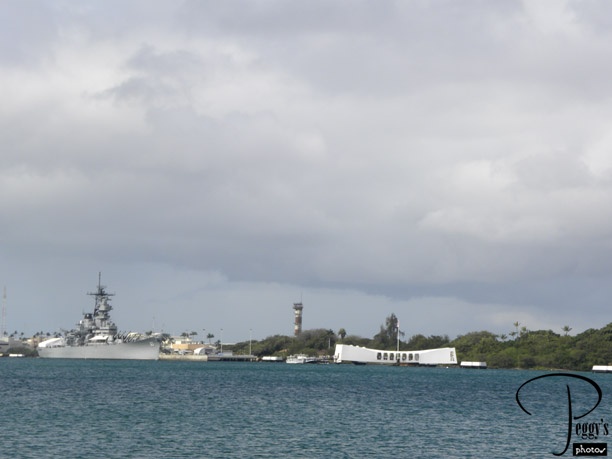
With my zoom lens.

USS Arizona Memorial
USS Arizona Memorial
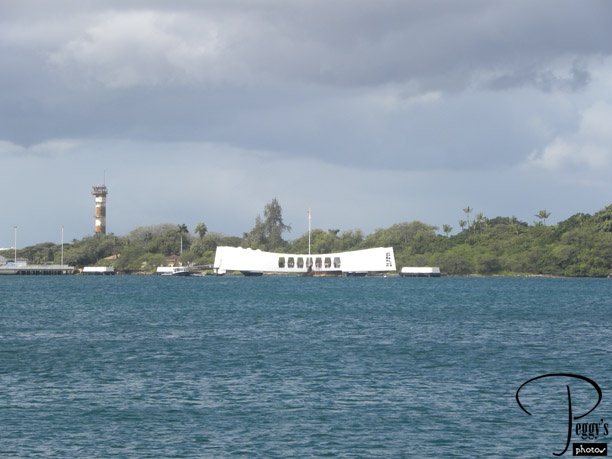
More zoom.

USS Arizona Memorial
USS Arizona Memorial
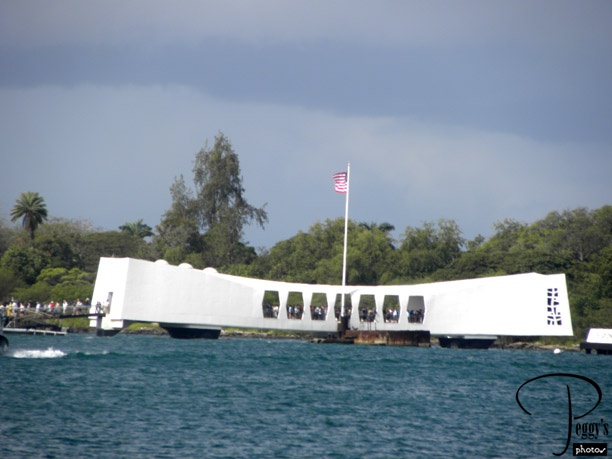
And more zoom. You can see people entering the memorial from its dock and people visiting inside it.

USS Arizona Memorial
USS Arizona Memorial
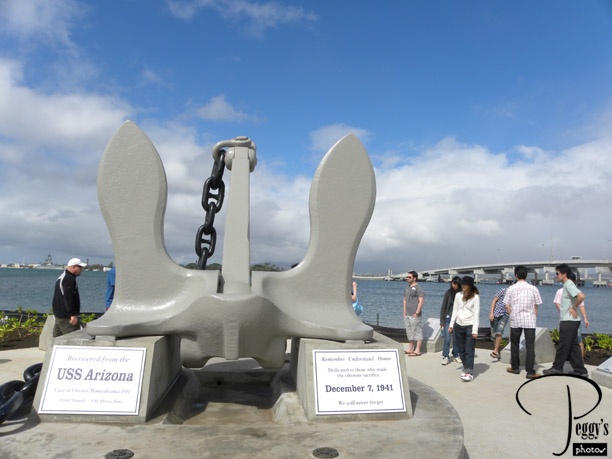
The anchor of the USS Arizona.

USS Arizona Memorial
USS Arizona Memorial
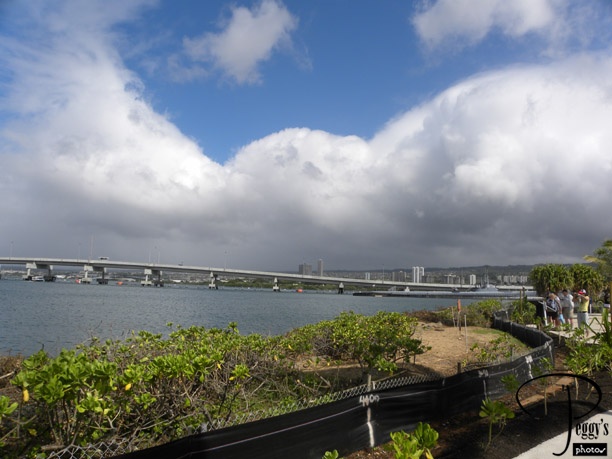
View looking in the other direction from Ford Island. You should be able to make out the USS Bowfin, a submarine.

USS Arizona Memorial
USS Arizona Memorial
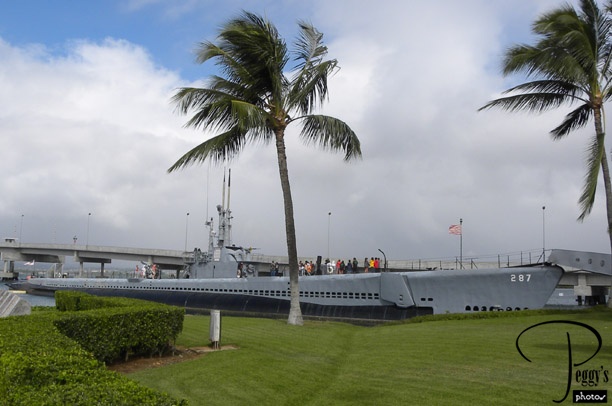
Closer–up view of the USS Bowfin. It was commissioned in May 1943, sunk 38 ships and small craft during World War II duty, and decommissioned in 1947. There was enough time on our tour if you wanted to go on it. I didn’t.

USS Arizona Memorial
USS Arizona Memorial
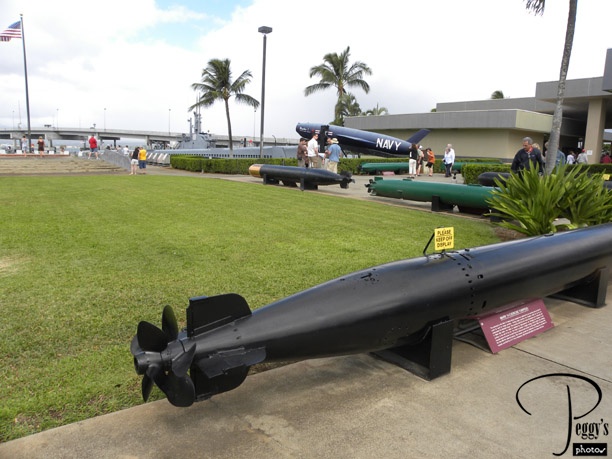
On the grounds of the Visitor’s Center: torpedos and an old Navy plane.

USS Arizona Memorial
USS Bowfin Museum
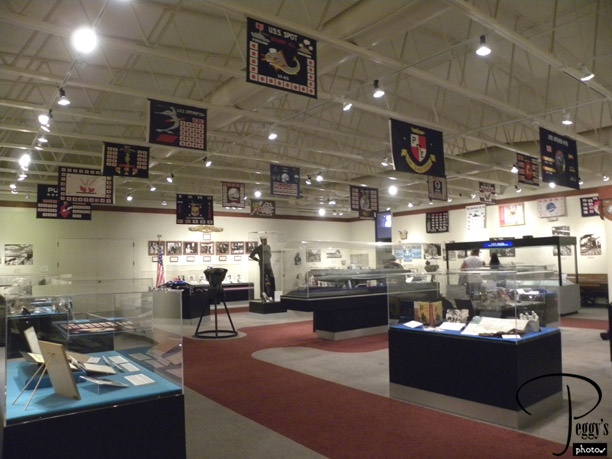
Instead of going on the submarine, I visited the USS Bowfin Museum, which I found very interesting. Inside the museum.

USS Bowfin Museum
USS Bowfin Museum
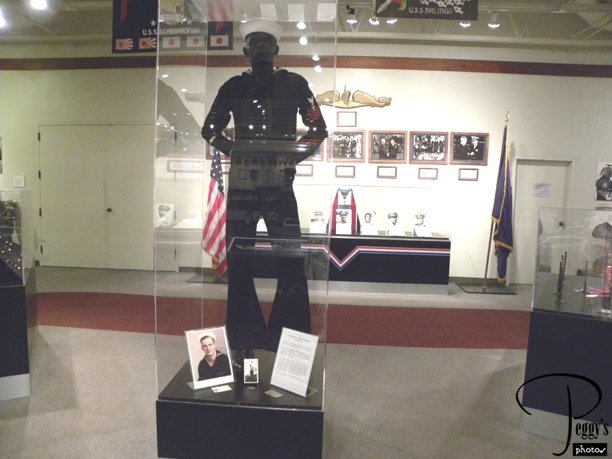
Not a good photo of a WWII US Navy uniform, but I liked seeing the uniform. It reminded me of my late husband who was wearing a navy uniform pretty close to this one when I first met him.

USS Bowfin Museum
USS Bowfin Museum
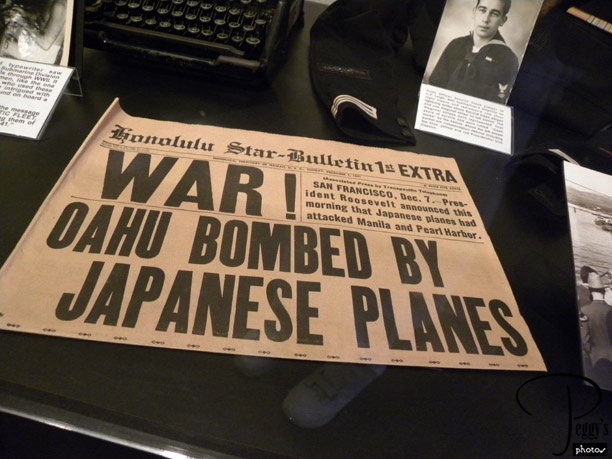
Newspaper headline from December 7, 1941. Of course, you know that it was Pearl Harbor, where I am right now, that was bombed that day.

USS Bowfin Museum
USS Bowfin Museum
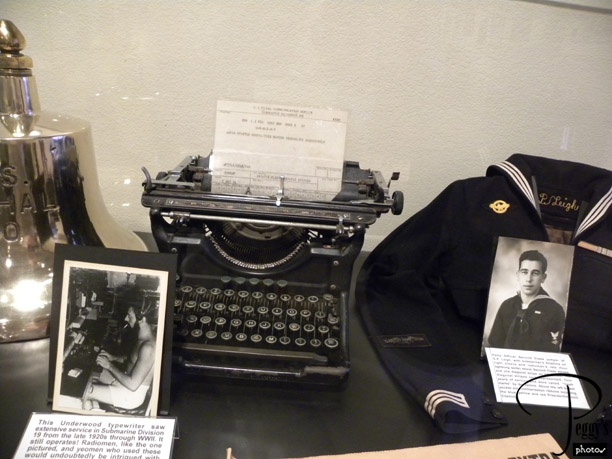
Old Underwood typewriter, which was used then to type messages to the bases.

USS Bowfin Museum
USS Bowfin Museum
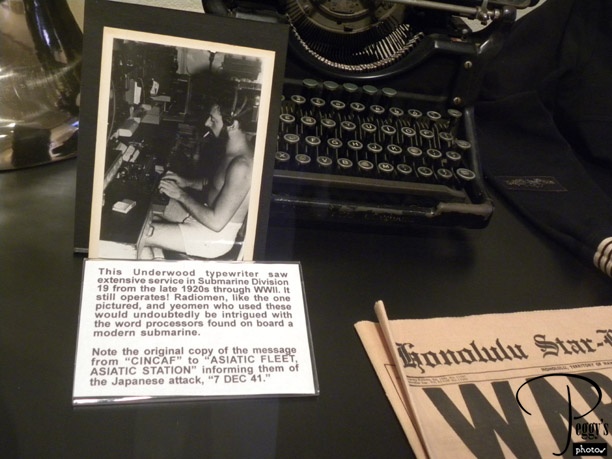
Close–up of a teletype operator.

USS Bowfin Museum
USS Bowfin Museum
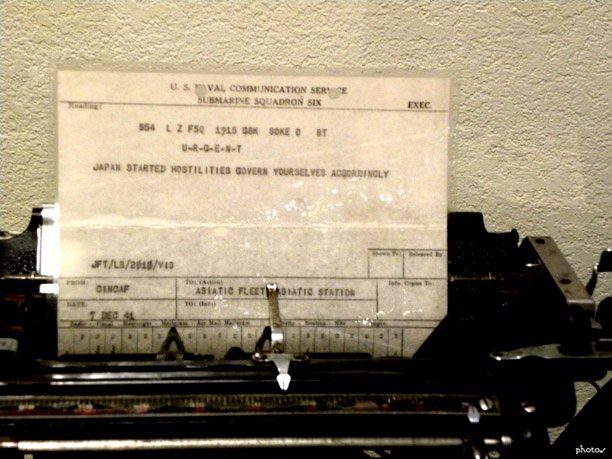
A copy of the original message received from U.S. Naval Communications: “Japan Started Hostilities Govern Yourselves Accordingly.”

USS Bowfin Museum
USS Bowfin Museum
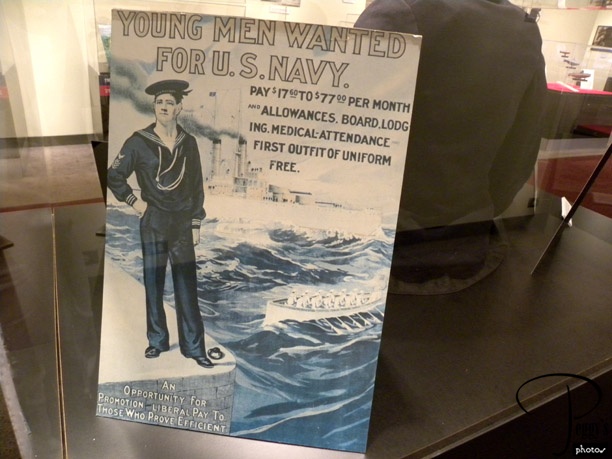
What I liked best at the museum were the recruiting posters. This one is advertising starting pay at $17.60 per month (that’s $211.20 per year) to $77 per month ($924 a year) plus free room and board, medical, and the first uniform.

USS Bowfin Museum
USS Bowfin Museum
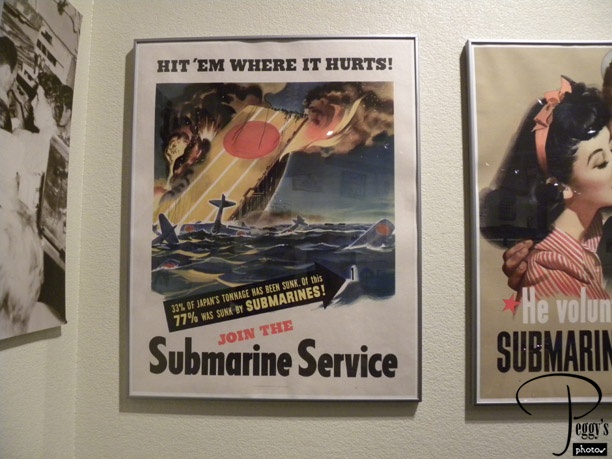
Another poster.

USS Bowfin Museum
USS Bowfin Museum
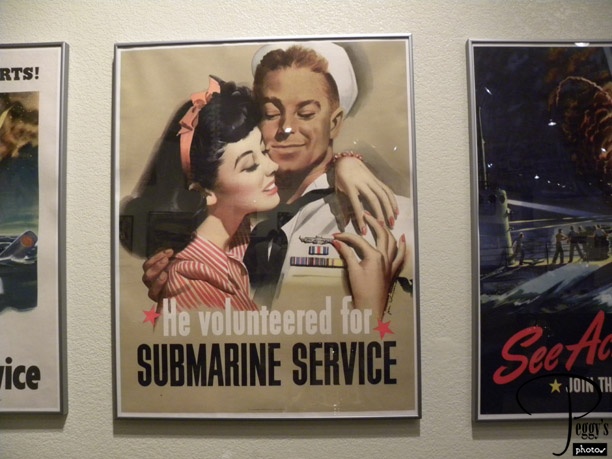
How to get the pretty girl.

USS Bowfin Museum
USS Bowfin Museum
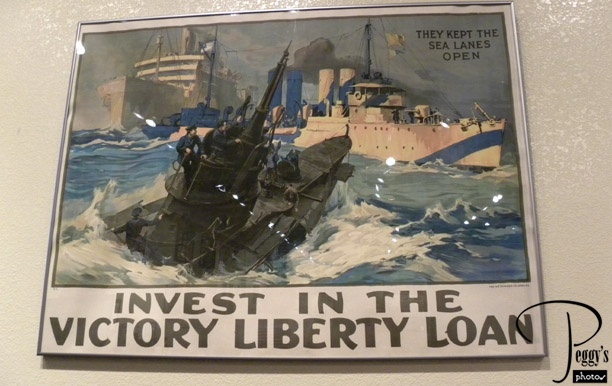
One for the public.

USS Bowfin Museum
USS Bowfin Museum
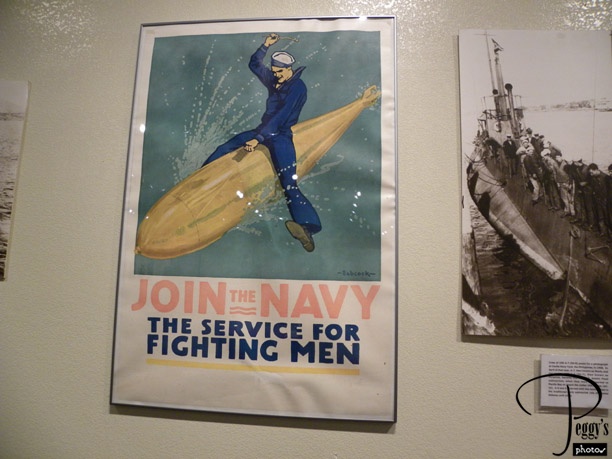
Another poster.

USS Bowfin Museum
USS Bowfin Museum

Another poster.

USS Bowfin Museum
USS Bowfin Museum

Another poster.

USS Bowfin Museum
USS Bowfin Museum
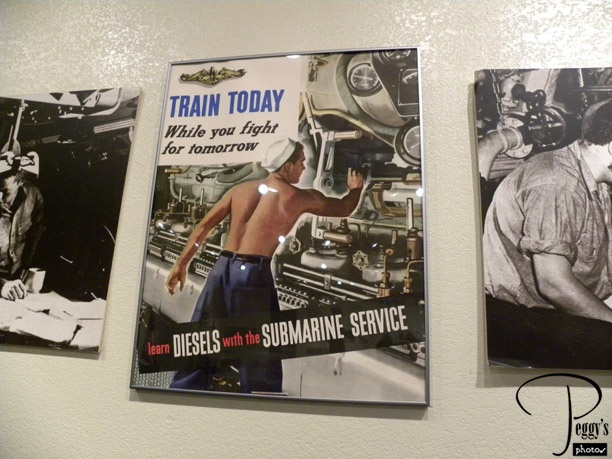
Another poster.

USS Bowfin Museum
USS Bowfin Museum
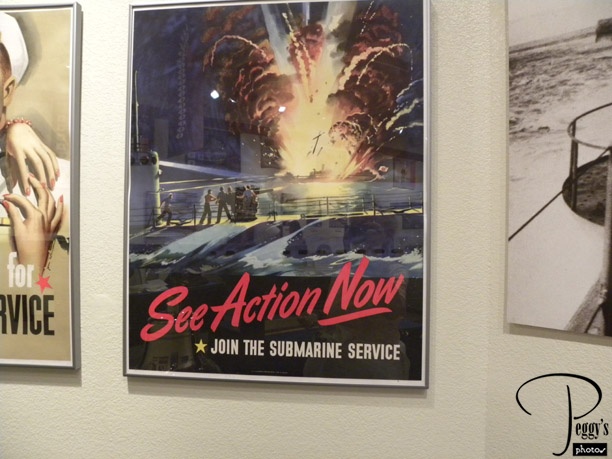
Another poster.

USS Bowfin Museum
USS Bowfin Museum

And another way to get the pretty girl: smoke Pall Mall.

USS Bowfin Museum
USS Bowfin Museum
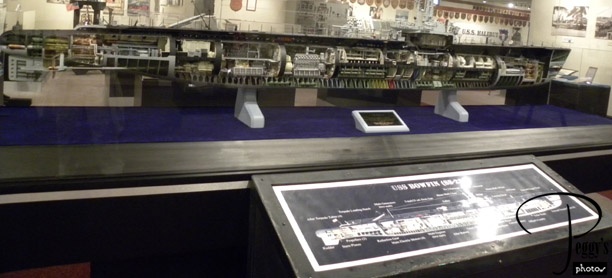
A cut–out of the USS Bowfin.

USS Bowfin Museum
USS Bowfin Museum
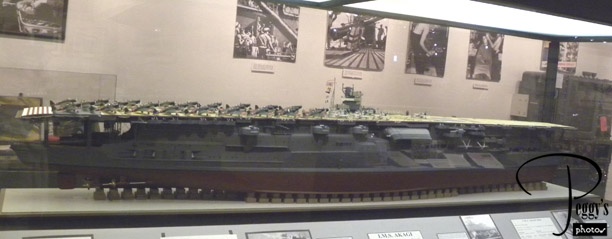
Model of the I.M.S. Akago, flagship of the Japanese Naval Strike Force.

USS Bowfin Museum
USS Bowfin Museum
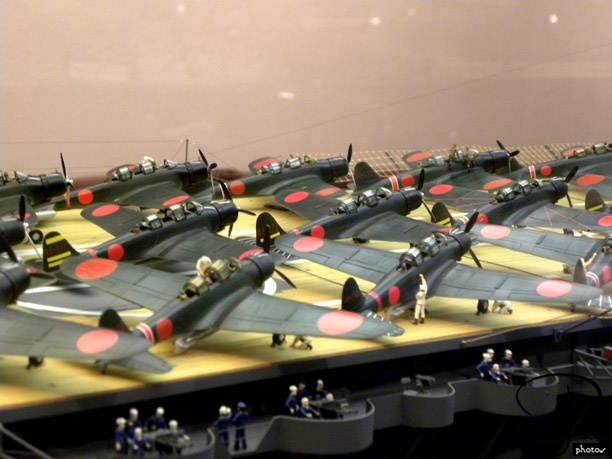
Models of Japanese planes on the I.M.S. Akago.

USS Bowfin Museum
USS Bowfin Museum
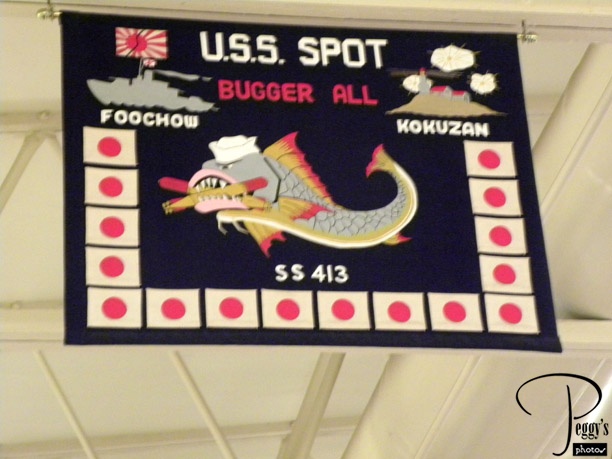
On the walls and hanging from the ceiling of the museum were reproductions of the battle flags of U.S. submarines that fought the war in the Pacific. Each flag was individually designed by crewmen of a submarine. I assume that the red dots indicate the number of Japanese ships, etc., that the submarine sank.

USS Bowfin Museum
USS Bowfin Museum

Another battle flag.

USS Bowfin Museum
USS Bowfin Museum
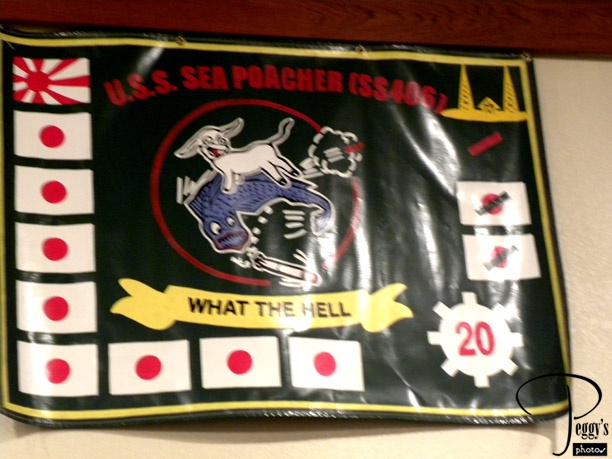
Another battle flag.

USS Bowfin Museum
USS Bowfin Museum
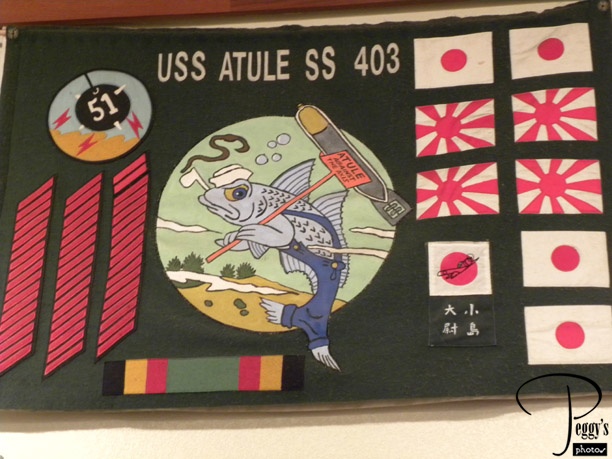
Another battle flag.

USS Bowfin Museum
USS Bowfin Museum
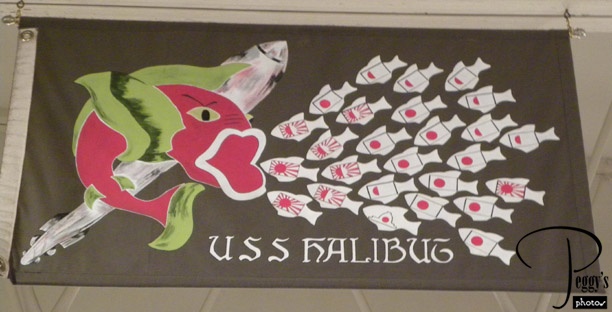
Another battle flag.

USS Bowfin Museum
USS Bowfin Museum
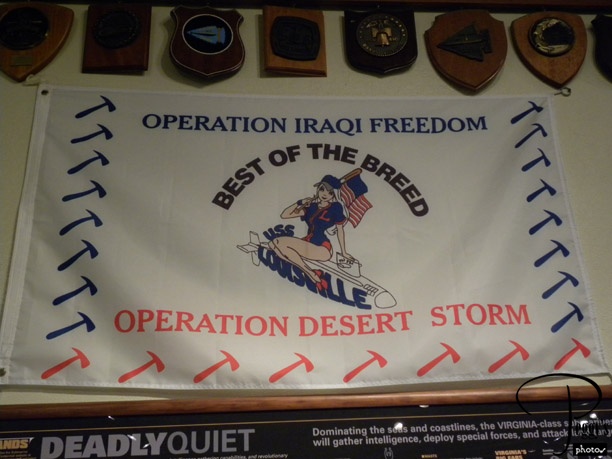
One from Operation Iraqi Freedom/Operation Desert Storm.

USS Bowfin Museum
USS Bowfin Museum
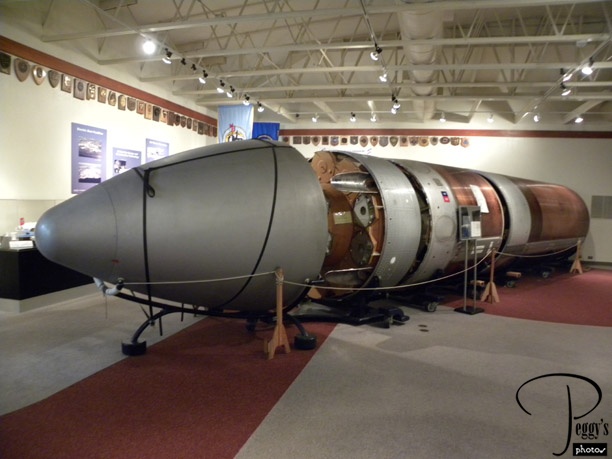
A Poseidon missile. A submarine would carry 25 of these.

USS Bowfin Museum
USS Arizona Memorial
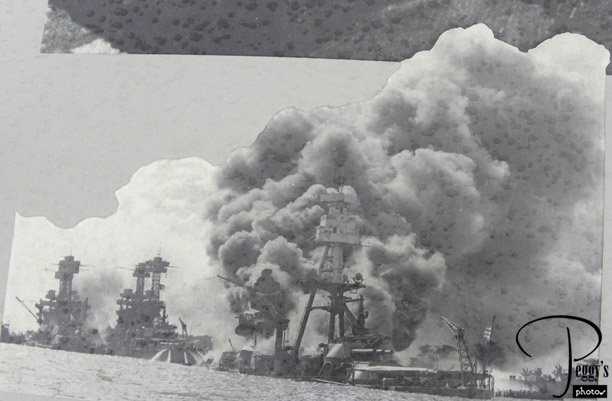
Outside the museum, there was a movie being run in a small tent. My understanding is that this movie or movies used to be run in a big theatre at the Visitor’s Center. It was so crowded in the tent that it was almost impossible to view the movie. I tried and gave up. However, there were large photographs to be viewed along the walkway to the boat. This one shows the attack on the USS Arizona.

USS Arizona Memorial
USS Arizona Memorial
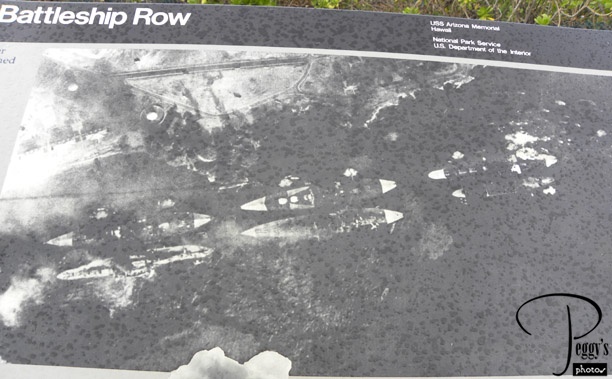
Battleship Row being attacked. Seven US battleships were moored in Battleship Row: the USS West Virginia, Maryland, Oklahoma, Nevada, Tennessee, California, and Arizona. The USS Vestal, a repair ship, was also bombed as well as the USS Pennsylvania in drydock. Additionally, the airfield on Ford Island was attacked.

USS Arizona Memorial
USS Arizona Memorial
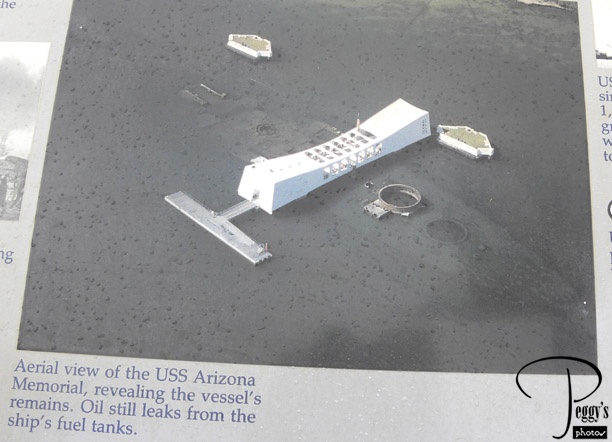
Aerial view of the USS Arizona Memorial. The memorial is placed on top of the sunken ship, part of which can be seen.

USS Arizona Memorial
USS Arizona Memorial
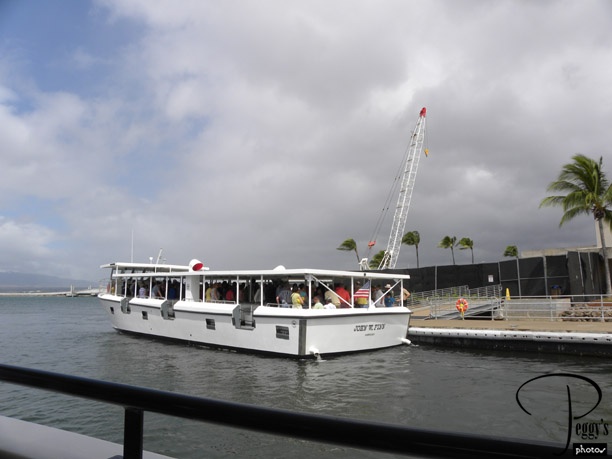
A boat like this one took us out to the memorial.

USS Arizona Memorial
USS Arizona Memorial
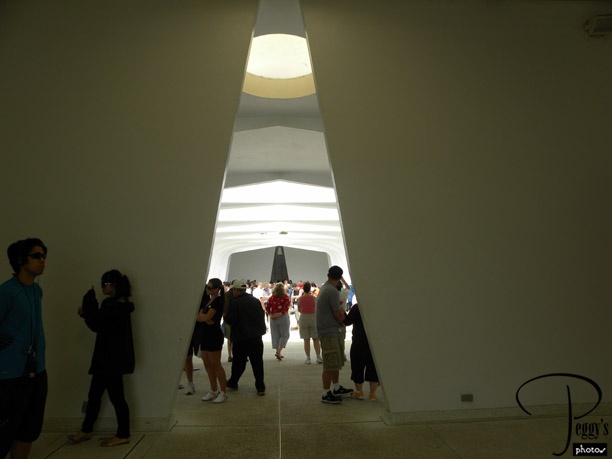
Entering the memorial.

USS Arizona Memorial
USS Arizona Memorial
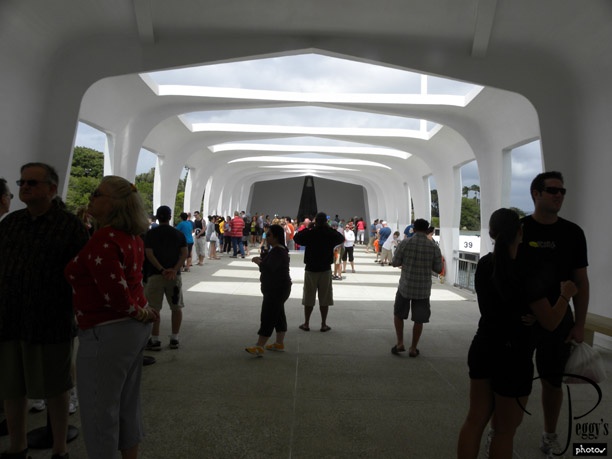
Farther inside.

USS Arizona Memorial
USS Arizona Memorial
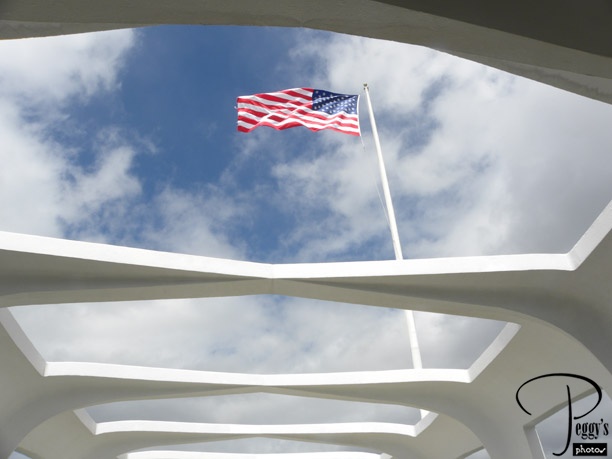
U.S. flag seen through the openings of the memorial.

USS Arizona Memorial
USS Arizona Memorial
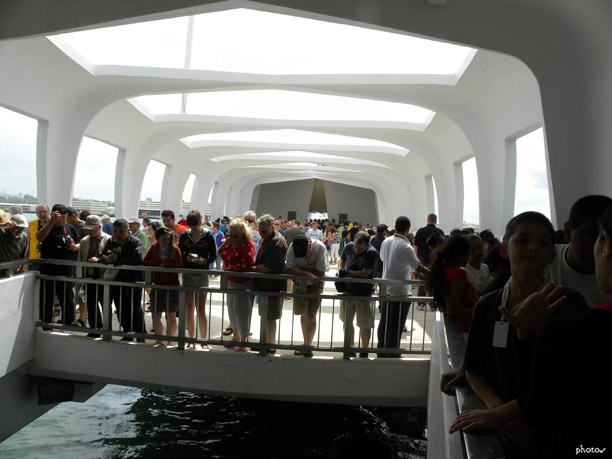
People looking into a cutout.

USS Arizona Memorial
USS Arizona Memorial
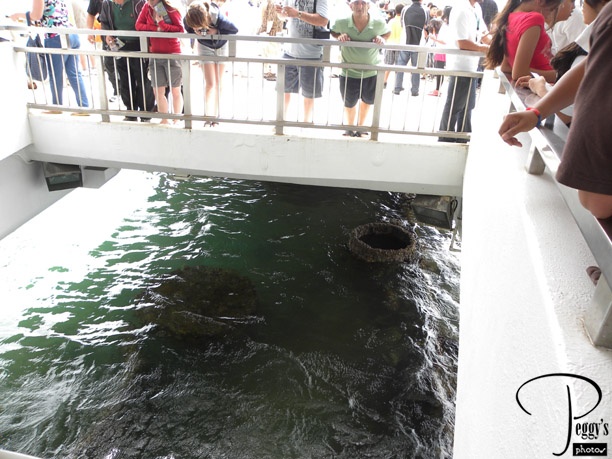
You can see part of the sunken ship through the cutout.

USS Arizona Memorial
USS Arizona Memorial
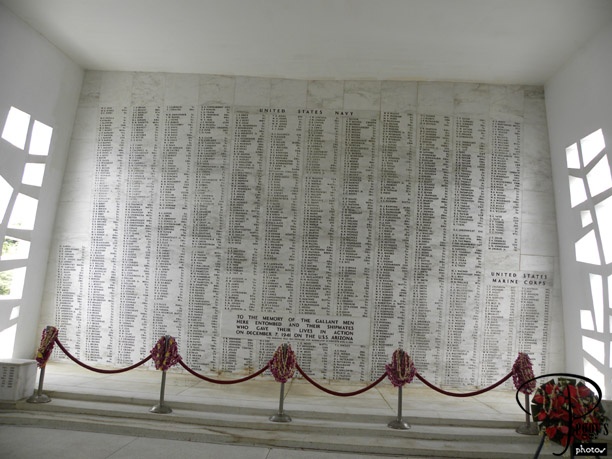
The memorial wall listing the names of the 1,117 of the crew who perished with the sinking of the ship. There were survivors. We were told that when a survivor dies, his ashes can be buried on the ship with his shipmates. This is also an option for the survivors of one of the other ships as well

USS Arizona Memorial
USS Arizona Memorial
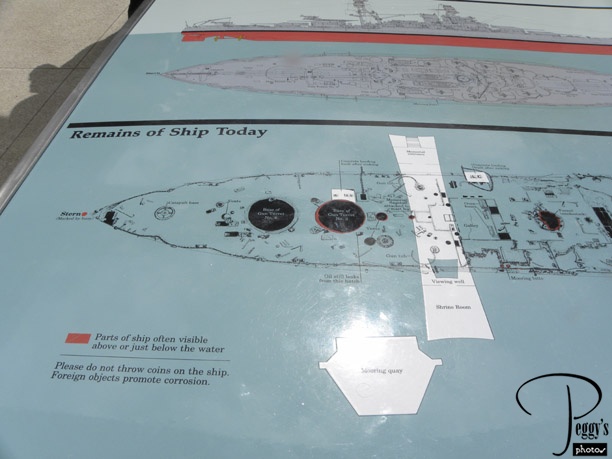
One–half of a drawing showing what is still visible of the sunken ship.

USS Arizona Memorial
USS Arizona Memorial
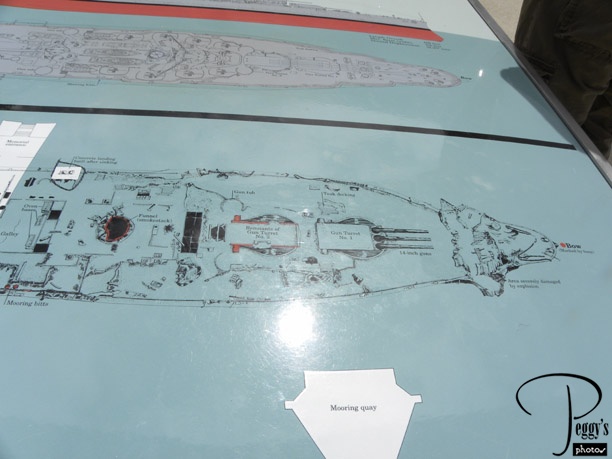
The other half of the drawing.

USS Arizona Memorial
USS Arizona Memorial
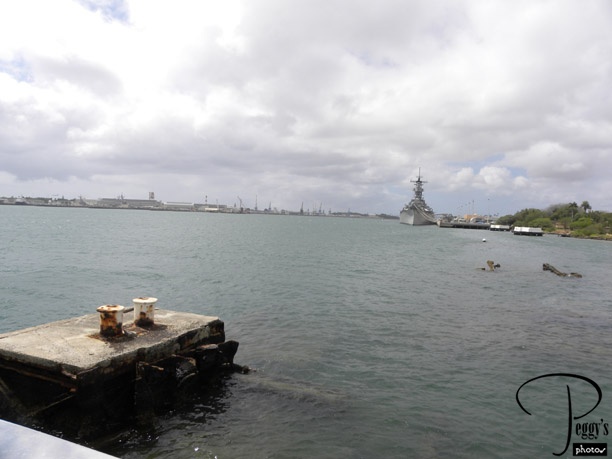
Parts of the sunken USS Arizona that can still be seen. On the right is the USS Missouri and two memorial markers, one for the USS Vestal, a repair ship, and the USS Nevada.

USS Arizona Memorial
USS Arizona Memorial

Close–up of the memorial marker for the USS Nevada.

USS Arizona Memorial
USS Arizona Memorial
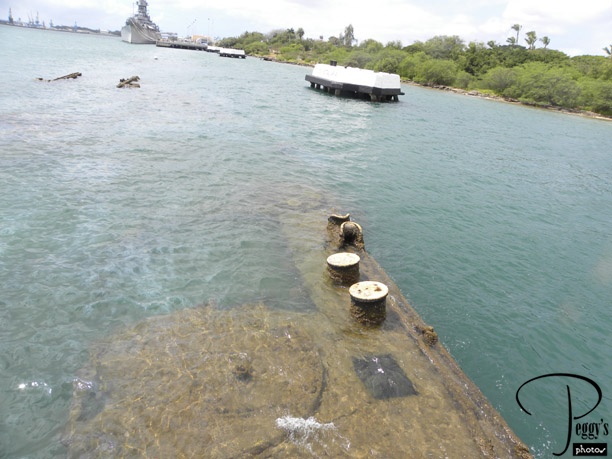
And more. Oil is still leaking from the ship even though it was sunk 68 years ago. In the middle of the photo are the memorial markers for the USS Tennessee and the USS West Virginia.

USS Arizona Memorial
USS Arizona Memorial
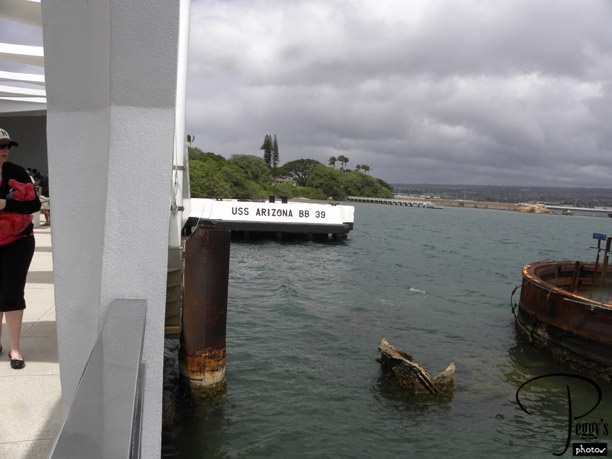
More parts of the sunken ship and the memorial marker for the USS Arizona.

USS Arizona Memorial
USS Arizona Memorial
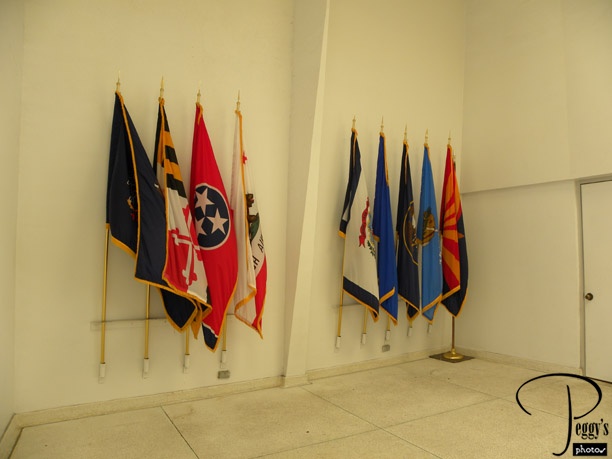
At the USS Arizona Memorial, there are flags from the states that the sunken ships were named for plus other flags for the armed services, etc.

USS Arizona Memorial
USS Arizona Memorial
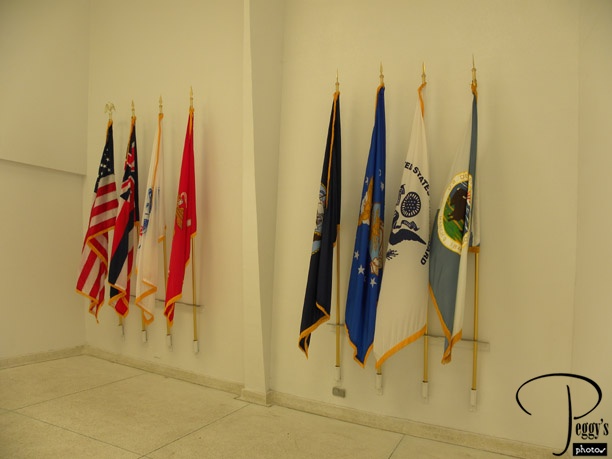
More of the flags.

USS Arizona Memorial
USS Arizona Memorial

I asked this man to hold up some flags for me (he had already done so for one of his friends). The California State Flag.

USS Arizona Memorial
USS Arizona Memorial
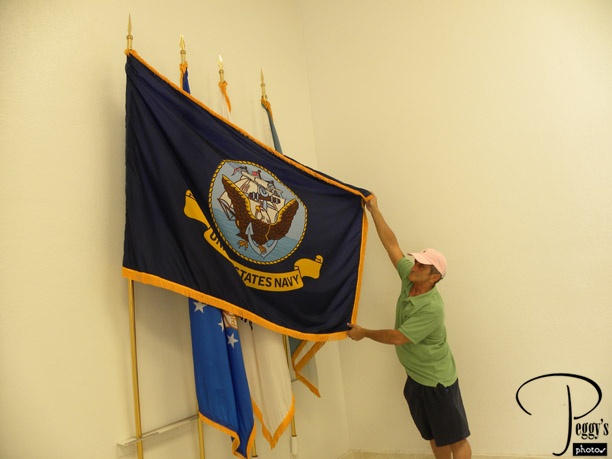
The U.S. Navy Flag, for all those who have served in the U.S. Navy.

USS Arizona Memorial
USS Arizona Memorial
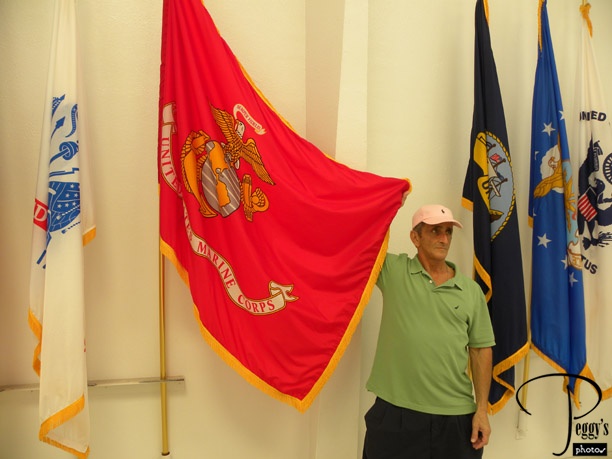
The U.S. Marine Corps Flag, for all those who have served in the U.S. Marines.

USS Arizona Memorial
Aloha Stadium
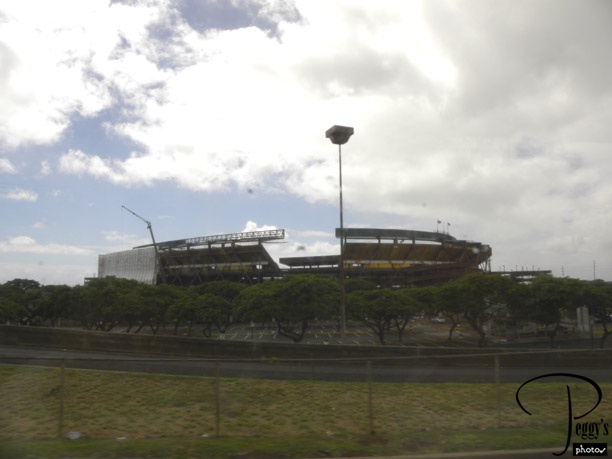
The boat took us back to the mainland and our bus took us past Aloha Stadium.

Aloha Stadium
The Punchbowl
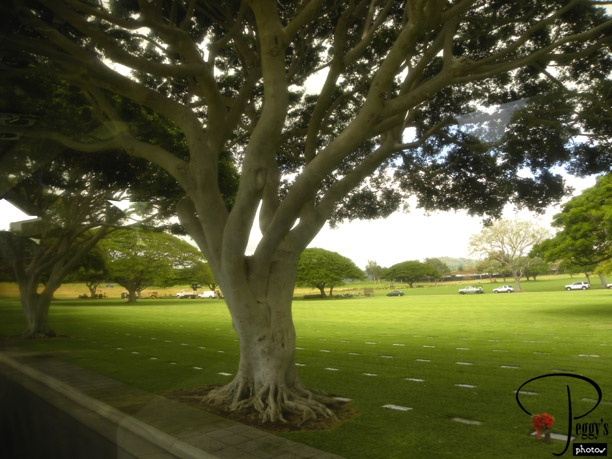
Our next destination was the National Memorial Cemetery of the Pacific, nicknamed The Punchbowl because of its shape. The cemetery lies in an extinct volcano called Pouwaina. Photo of one of many spectacular trees there.

The Punchbowl
The Punchbowl
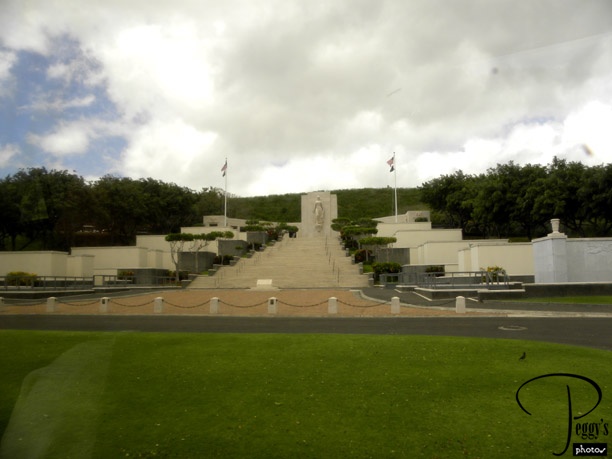
Buses are not allowed to stop in the cemetery, just drive around slowly, so all photos here were taken from the bus. Photo: A memorial with many stairs with 10 “Courts of the Missing” on either side of them. On the walls are the names of 26,280 American servicemen who were missing, lost, or buried at sea. There is also a “Court of Honor” commemorating all the branches of military service.

The Punchbowl
The Punchbowl

Close–up of the center tower and the statue of “Columbia,” a 30–foot female standing on a symbolized prow of a navy carrier. There is also a chapel here.

The Punchbowl
The Punchbowl
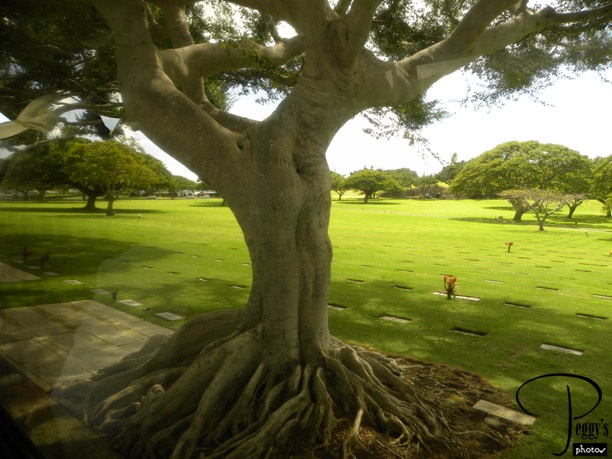
Another of the magnificent trees.

The Punchbowl
The Punchbowl
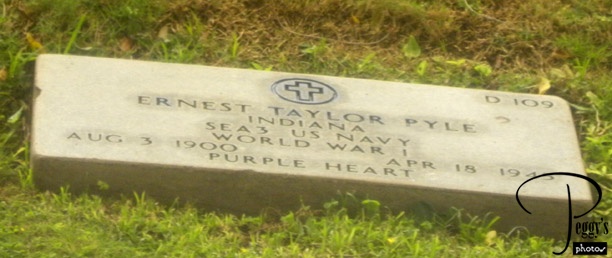
The memorial marker for the grave of Ernie Pyle, the American WWII correspondent whose column appeared in about 300 papers. He was killed on an island off Okinawa, hit by Japanese machine gun fire. He was the first person to be buried in this cemetery on the day it opened in 1949. Right near Ernie Pyle’s gravesite is the gravesite of Ellison Onizuka, the first astronaut from Hawaii, who lost his life in the Challenger accident. We were told that his uniform is buried in the grave.

The Punchbowl
Seen from the Punchbowl
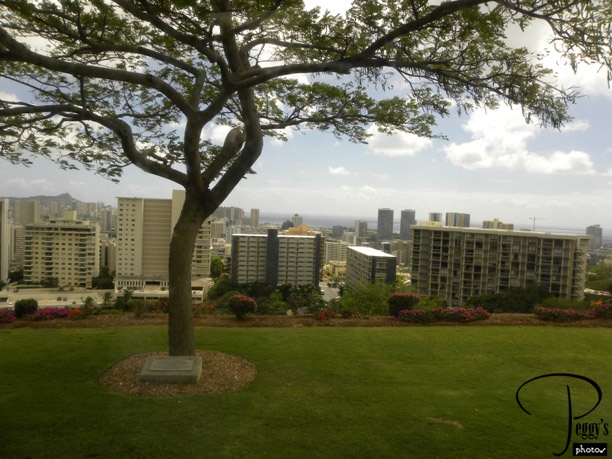
At the top of the Punchbowl––a view of Honolulu. The Pacific Ocean is in the background. My side of the bus got this view going out of the cemetery. While going up, our tour guide, a native of Tonga and a former brother in the Catholic Church (he said he is returning to the brotherhood) and also having a great sense of humor, stopped the bus going up, opened his window, to ask some tourists: “Pardon me, do you have any grey poupon?” It was hysterical. He also showed us photos of himself in Tonga when he weighed close to 600 pounds (he has had lap–band surgery and is down to about 300 pounds), in his brotherhood clothes, and photos of his mother.

Seen from the Punchbowl
Seen from the Punchbowl
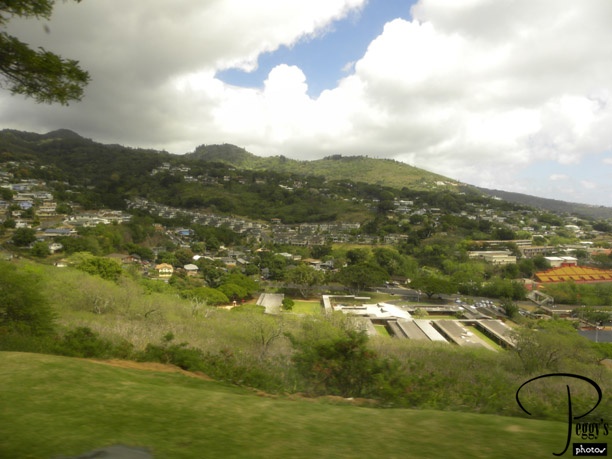
To the left of the second photo.

Seen from the Punchbowl
Seen from the Punchbowl
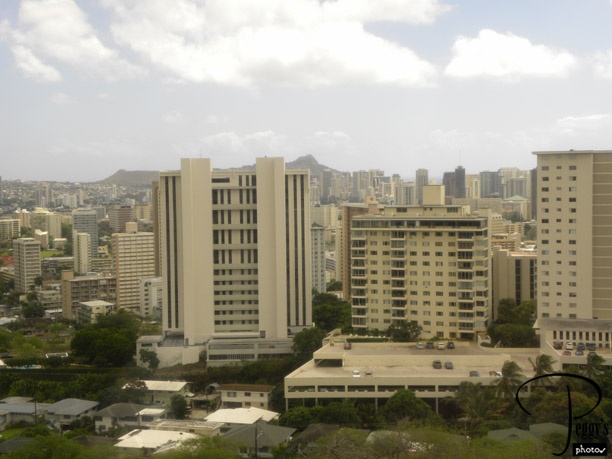
A close–up of Honolulu.

Seen from the Punchbowl
Downtown Honolulu–Korean War Veterans Memorial
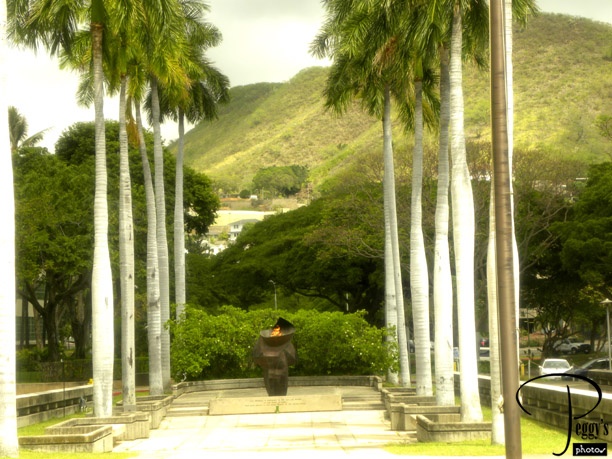
Next, we were driven around the old parts of Honolulu. The Korean War Veterans Memorial.

Downtown Honolulu–Korean War Veterans Memorial
Korean War Veterans Memorial
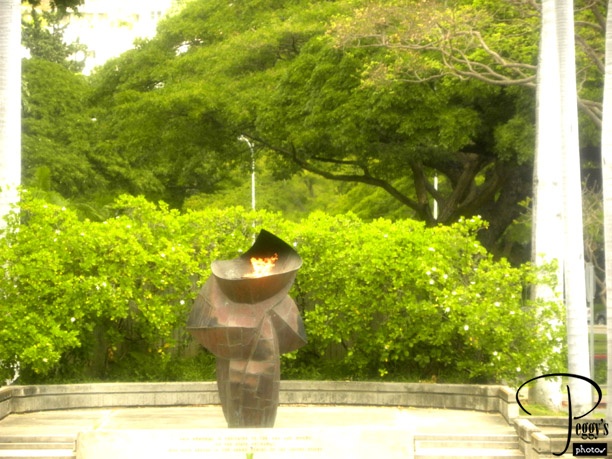
Close–up of the memorial.

Korean War Veterans Memorial
Statue of Father Damien
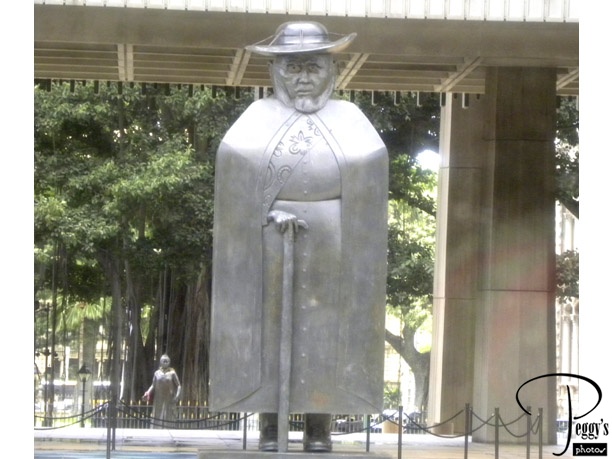
A statue of Father Damien. He came to Hawaii in 1864 and was ordained as a priest in Honolulu, then worked with lepers on the island of Molokai for nine years. On October 11, 2009, he was canonized. He is now Saint Damien de Veuster.

Statue of Father Damien
A Statue
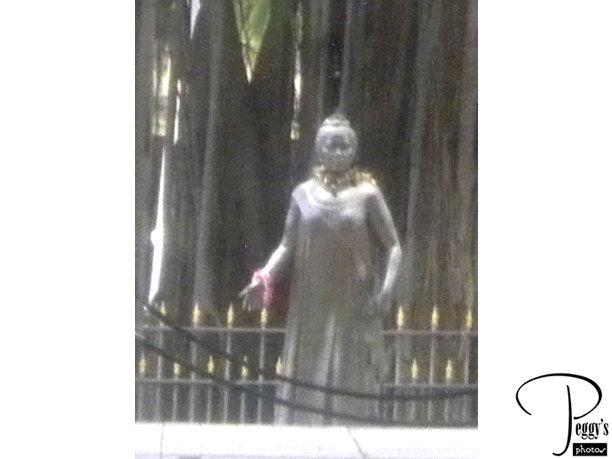
The statue in the background in the last photo. I don’t know who it is of.

A Statue
Downtown Honolulu
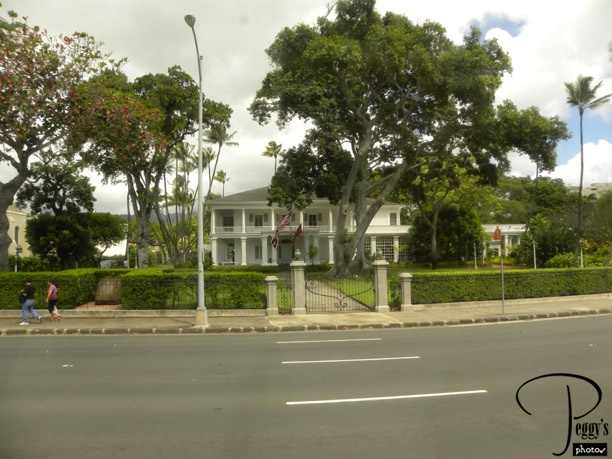
An old Hawaiian mansion. I don’t know its name or what it is used for today.

Downtown Honolulu
The Ali’iolani Hale
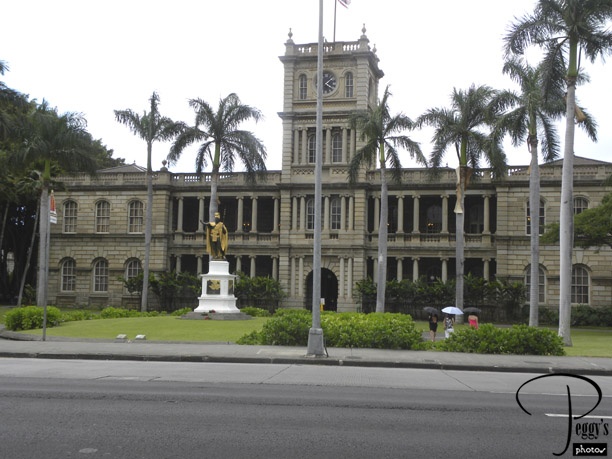
The Ali’iolani Hale. It was commissioned by King Kamehameha V to be his palace. It wasn’t completed until after his death in 1874. The new king, King Kalakaua, built another palace for himself. the Ali’iolani Hale is now home to Hawaii’s Supreme Court and the State Law Library.

The Ali’iolani Hale

The Ali’iolani Hale
Iolani Palace
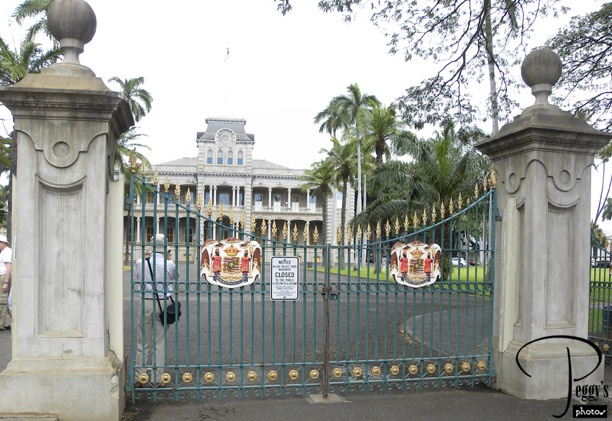
The new palace across the street from the Ali’iolani Hale: the Iolani Palace. It is the only official state residence of royalty in the U.S. It was the official residence of the last two monarchs of the Hawaiian Kingdom: King Kalakaua, who built the palace in 1882, and his sister and successor, Quenn Lili’uokalani.

Iolani Palace
Iolani Palace
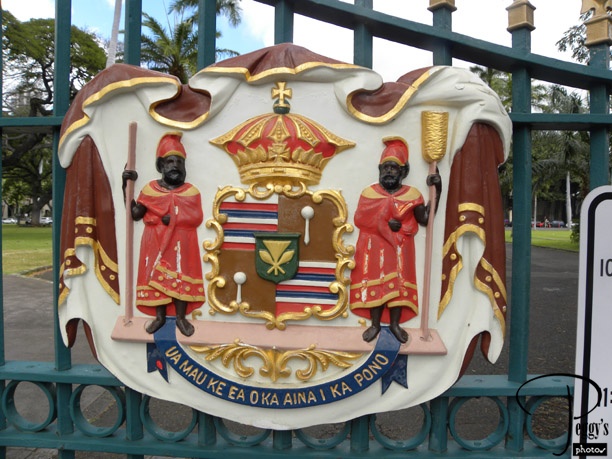
Coat of arms on the gate to the Iolani Palace.

Iolani Palace
Iolani Palace
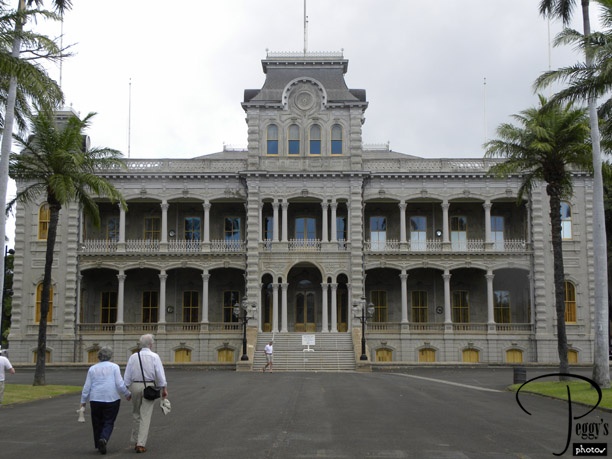
The Iolani Palace.

Iolani Palace
Iolani Palace
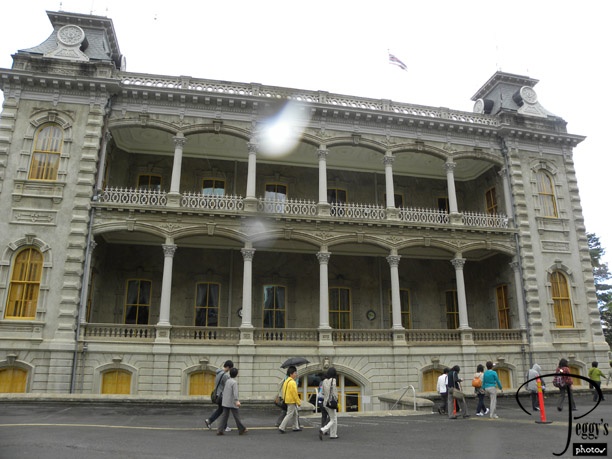
The back of the palace. My tour didn’t include entrance to the palace but some tours do or else you can visit on your own.

Iolani Palace
Iolani Palace
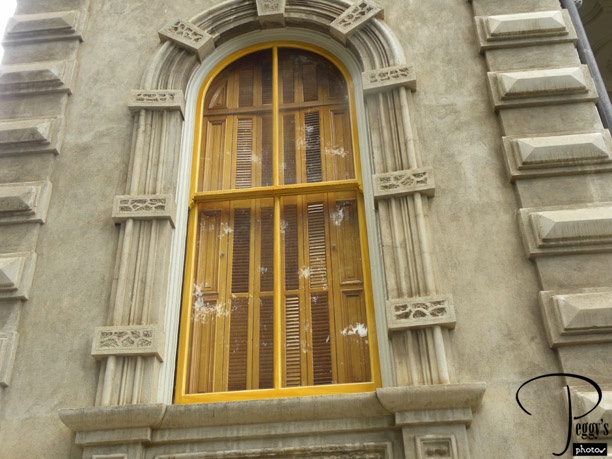
Close–up of one of the palace’s windows and the plantation shutters.

Iolani Palace
Iolani Palace

Unusual trees in the parking lot for the Iolani Palace.

Iolani Palace
Iolani Palace
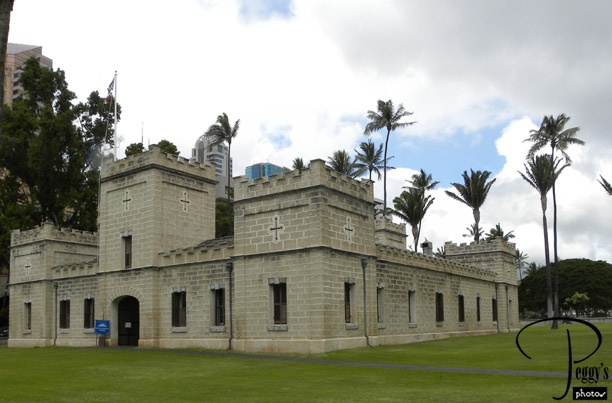
On the palace grounds, Halekoa, the Iolani Palace Barracks.

Iolani Palace
Iolani Palace
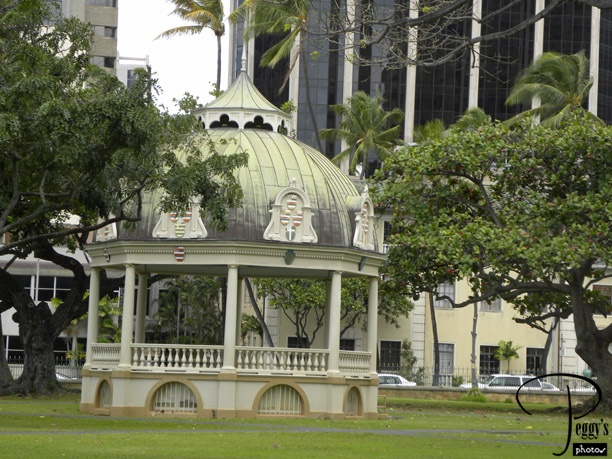
The Coronation Stand and Pavilion, built for the 1883 coronation of King Kalakaua.

Iolani Palace
The Kawaiaha’o Church
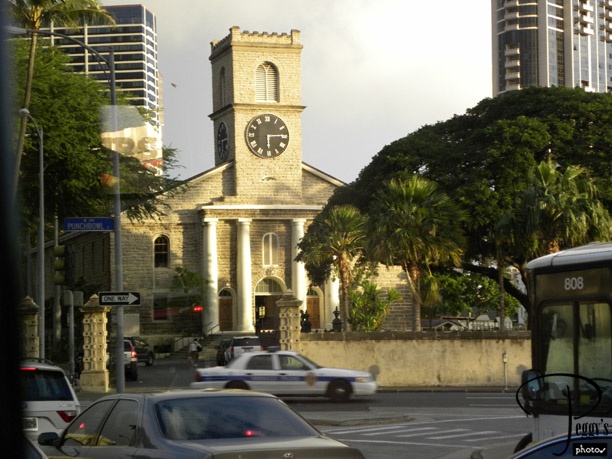
The Kawaiaha’o Church and Mission Cemetery. It was the first missionary in Oahu. The building was completed in 1842 in New England style architecture. It was built from coral slabs quarried from offshore Oahu.

The Kawaiaha’o Church
The Kawaiaha’o Church
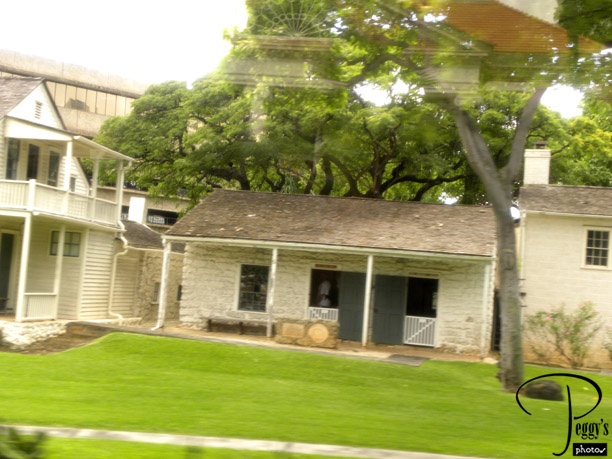
There are three mission houses remaining, built in the 1830s.

The Kawaiaha’o Church
Waikiki Beach
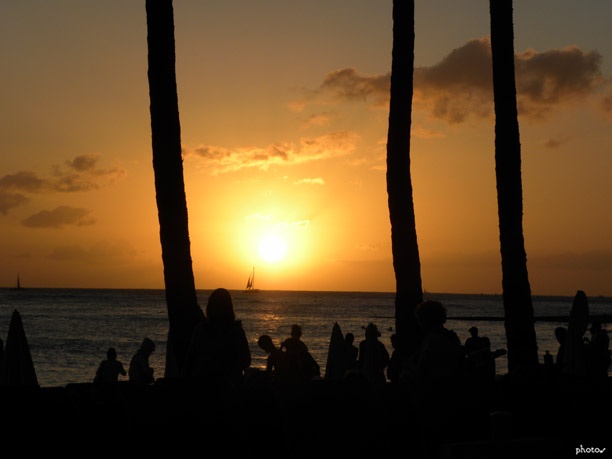
The tour bus dropped us off near our hotels. I was back in time to take photos of a Waikiki sunset.

Waikiki Beach
Waikiki Beach
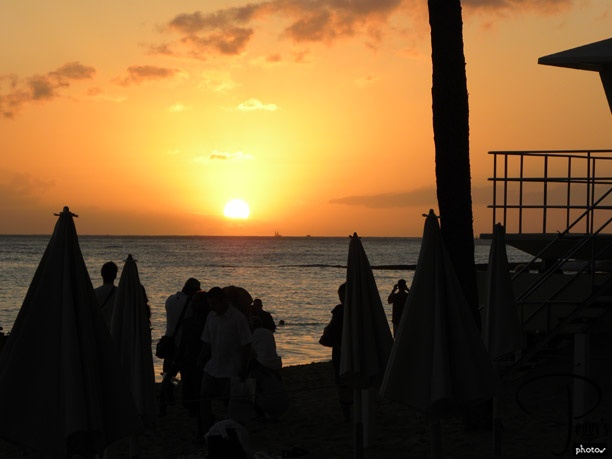
More of the sunset.

Waikiki Beach
Waikiki Beach
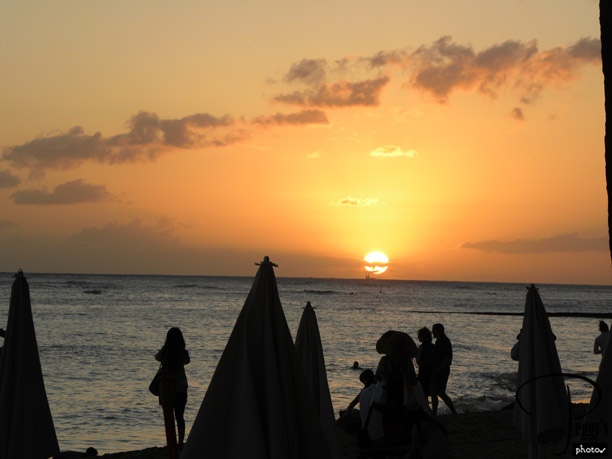
More of the sunset.

Waikiki Beach
Waikiki Beach
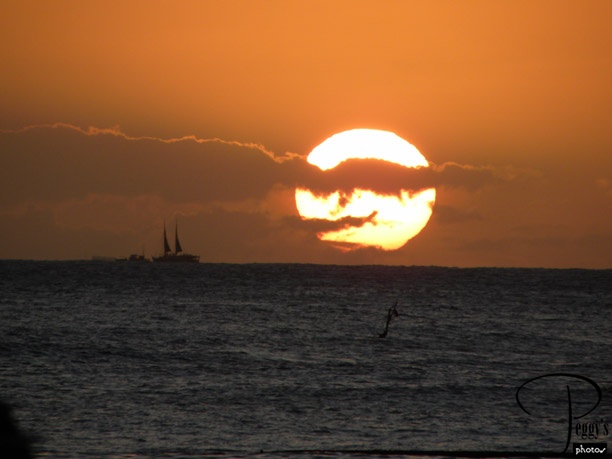
More of the sunset.

Waikiki Beach
Waikiki Beach
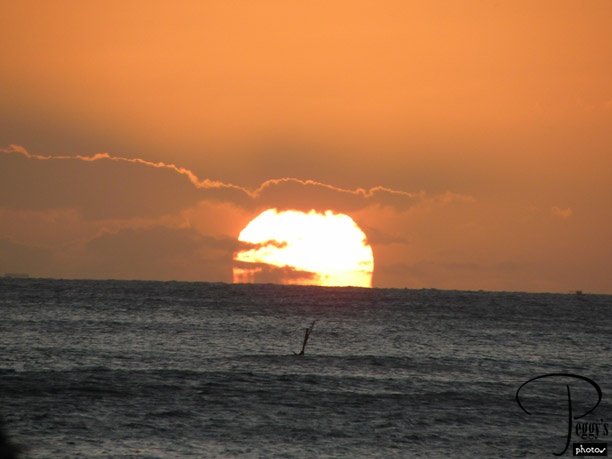
More of the sunset.

Waikiki Beach
Waikiki Beach
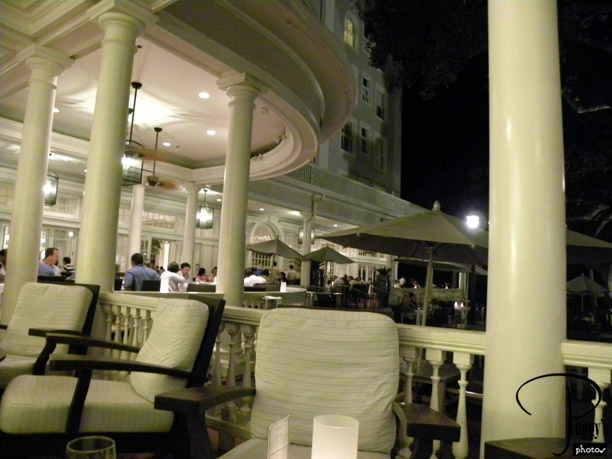
Britt and I decided to have drinks in the hotel’s outside lounge. If you sit on these chairs, you don’t want to get up. So we didn’t. We ordered appetizers from the bar menu for our dinner––definitely try the crabcakes here. Delicious.

Waikiki Beach
Waikiki Beach
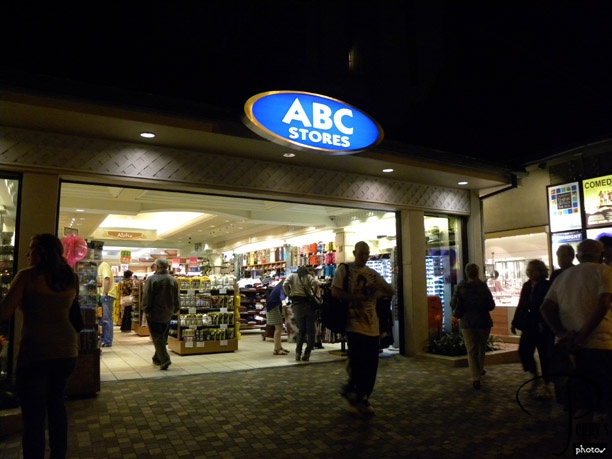
After dinner, we took a short walk on Kalakaua Avenue, short because it started to rain. Photo of an ABC market––there is one on every corner in Waikiki.

Waikiki Beach
Waikiki Beach
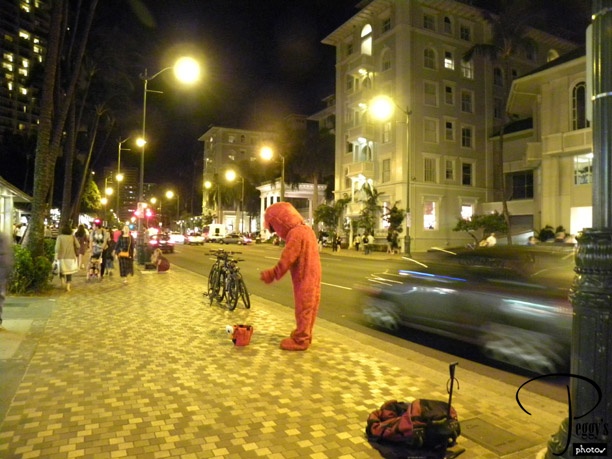
A street performer.

Waikiki Beach
Waikiki Beach
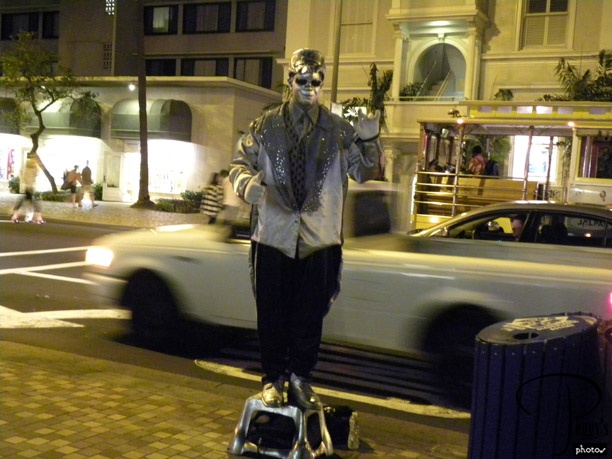
And another one. Back to the hotel and the end of another very good day.

